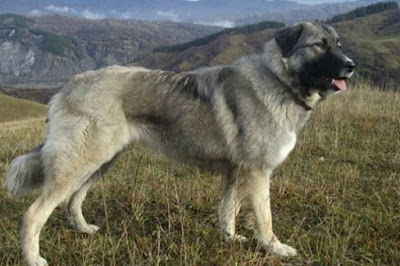The Blue Paul Terrier, also known as the Blue Poll is an extinct dog breed known for its aggressive hounds. Due to their extinction, nothing could be stated clearly and certainly about the hounds. All information has a touch of ‘likely’ to it. However, all the sources lead to some common information that has been aggregated here for you.
The curiosity about this extinct dog breed leads one to often find out about them and the reason for their extinction. If you are also a curious one, let’s find out the most interesting facts about the Blue Paul Terrier.
The Fighting Dogs of the Bygone Times
The Scottish dog breed Blue Paul Terrier has a violent history of fighting and killing. Their exact origin is an exciting mystery but their introduction to the United Kingdom dates to around the late 18th century. The breed is likely a result of crossbreeding between the Irish Blue Terrier and the White Bull Terrier.
Names of the Breed
At that time, the breed got some unique names related to the place of birth and the color of the coat. Scottish Bull Terrier, Blue Poll, Smuts, Red Smuts, and Blue Poll Bulldog are some of the names the breed was recognized as. However, the name Blue Paul Terrier earned the most fame.
The Blue Hound Had a Blue Coat
The hound had a dark blue smooth coat that made them look similar to a Greyhound. Some dogs of the breed also had brindle and red coats and were called Red Smuts. The large heads of these dogs with flat foreheads and small cropped ears gave them an intimidating appearance.
The Daunting Appearance
From the drawings of the Blue Poll, some inferences on their appearance are drawn today. The breed had a muscular and athletic build with thin legs and a skinny tail. The flat snouts they inherited from the Bulldogs and the broad chest gave them a straight standing and ready for a fight appearance. The intense look was mostly because of their contracted dipped eyebrows.
Strength and Agility Defined Them
The unbelievable popularity of these dogs in Scotland was mostly due to their prized strength and courage. They were perfect candidates for dog-fighting and would rip the enemy apart in the ring. The potential to suffer gave them a unique place on the dog-fighting enthusiasts’ list.
Their Nature Leads to Their Extinction
The violent and aggressive nature of the poor canine made it unsuitable as a household companion. In the early 20th century, the breed started moving towards extinction due to the criminalization of dog-fighting and their unpopularity as pets. The breed lost patronage and dissolved into the cosmos.
Are They Really Extinct?
There is no official document declaring the extinction of the Blue Paul Terrier. Many people believe that the breed was bred with other dog breeds so often that it has simply diluted. The looks of the Blue Poll can still be found in the American Pitbull Terriers and the Staffordshire Bull Terriers.
How Heavy and Tall Did a Blue Paul Terrier Stand?
With a weight of 45-55 lbs and standing at a height of 14-20 inches, the dog resembled bull terriers in appearance and was counted as a large dog. They lived naturally for as long as 12-13 years if the fighting pits left them alive.
Heavy Exercise Needs
Although no one knows for certain how long these dogs used to work out, their athletic endeavors lead one to believe that they were heavy working out dogs. The job of dogfighting requires high mental stimulation which must have been provided by exercising.
Say Goodbye to Groomers
It is highly likely that the short, smooth coats and the tough lifestyles of these dogs did not require much combing and bathing. Bathing must have been a rare resort for these dogs. Nails are the assets for the fighting dogs. Why clip them?
Frequently Asked Questions
Is the Blue Paul Terrier Extinct?
The Scottish breed is believed to be extinct however, some theories say they have simply evolved into the modern-day Pitbulls.
Was a Blue Paul Terrier a Suitable Pet?
Is the champion of the dog-fighting ring, with aggression that scares, a suitable pet for the household? Highly unlikely.
When Did the Blue Paul Terrier Go Extinct?
The dog had its popularity at its peak in 19th century Scotland. However, they lost it all in the early 20th century and are believed to have gone extinct around that time only.
Is Your Pitbull a Blue Paul Terrier?
Most likely not. The Blue Paul Terrier has gone extinct and even if the dilution theory holds water, a purebred Blue Paul Terrier is unlikely to be found today. Your Pitbull might just be your Pitbull.






